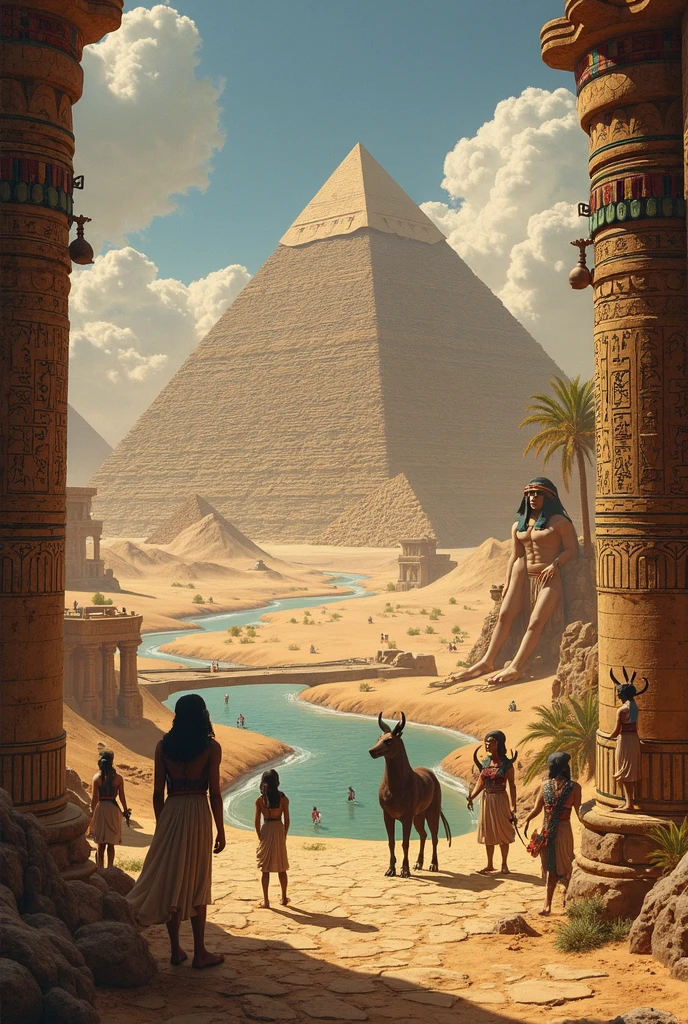Hawaiian Mythology: The Power of Pele and the Sacred Fire
Hawaiian mythology is a rich tapestry of gods, goddesses, and legends that explain the origins of the islands and their natural wonders. Among these deities, Pele, the goddess of volcanoes and fire, stands out as one of the most revered and feared figures. Her stories are deeply intertwined with the land, creation, and the concept of ohana (family). Understanding Pele’s role offers a glimpse into the spiritual heart of Hawaii.
Who Is Pele?
Pele is the Hawaiian goddess of fire, lightning, wind, and volcanoes. She is both a creator and destroyer, shaping the Hawaiian Islands with her fiery power. According to legend, Pele traveled from Tahiti to Hawaii, using her fire to carve out new land. Her home is believed to be Halemaʻumaʻu Crater in Kīlauea, one of the world’s most active volcanoes.
Pele’s Origins and Family
Pele’s story begins with her parents, Haumea (earth goddess) and Kane Milohai (sky god). She is part of a large ohana, including siblings like Namakaokahaʻi (goddess of the sea) and Hiʻiaka (goddess of hula). Their relationships often reflect the dynamic forces of nature—fire versus water, creation versus destruction.
| Deity | Domain | Relationship to Pele |
|---|---|---|
| Namakaokahaʻi | Sea | Sister (rival) |
| Hiʻiaka | Hula, Forests | Youngest sister (protector) |
| Kamapuaʻa | Wild Boar, Rain | Lover/enemy |
Pele and the Creation of Hawaii
Pele’s journey across the Pacific is a central theme in Hawaiian creation myths. As she searched for a home, her digging with a magical stick (Paʻoa) formed volcanic craters. Each island represents a failed attempt to settle until she reached Kīlauea, where she finally found peace. This legend explains the chain of islands and their volcanic origins.
The Kapu System and Pele’s Wrath
The ancient Hawaiians lived under kapu (sacred laws), many tied to Pele. Violating these rules—such as taking lava rocks or disrespecting her land—was believed to bring misfortune. Even today, many visitors return rocks after experiencing “Pele’s Curse,” a modern twist on this ancient belief.
- Kapu Rules Related to Pele:
- Never take lava rocks from her domain.
- Avoid eating berries or pork near her sacred sites.
- Show respect during eruptions (offerings or chants).
Pele in Modern Hawaiian Culture
Pele remains a living presence in Hawaii. Locals and scientists alike speak of her moods—gentle flows versus explosive eruptions. Her stories are shared through hula, chants (oli), and oral traditions, keeping the connection between land and ohana alive.
Scientific and Spiritual Perspectives
While modern science explains volcanic activity through plate tectonics, many Hawaiians view eruptions as Pele’s fire reclaiming land. This duality highlights the harmony between tradition and knowledge. For more on Hawaiian geology, visit USGS.
Key Legends of Pele
Pele’s myths are filled with passion, conflict, and transformation. Here are three essential tales:
- Pele and Namakaokahaʻi: A battle between fire and sea, ending with Pele’s death and rebirth as a goddess.
- Pele and Hiʻiaka: A story of betrayal and loyalty, where Pele’s jealousy tests her sister’s devotion.
- Pele and Kamapuaʻa: A tempestuous love affair between fire and rain, symbolizing nature’s balance.
For deeper dives into these legends, explore Bishop Museum archives.
Visiting Pele’s Sacred Sites
If you travel to Hawaii, these locations honor Pele’s legacy:
- Hawaiʻi Volcanoes National Park: Home to Kīlauea and Halemaʻumaʻu Crater.
- Puu Oo Vent: A recent eruption site showcasing her power.
- Kaʻena Point: Where Pele first arrived in Hawaii.
For travel tips, check Go Hawaii.
Explore more about Hawaiian myths and legends on our site, and join our community on Facebook for daily updates!
Pele’s influence extends beyond myths into Hawaiian art and hula, where her fiery essence is captured through movement and visual storytelling. Traditional hula dances, known as hula kahiko, often depict her journeys, battles, and creative power. Artists carve her likeness into wood and stone, while chants (mele) invoke her presence during ceremonies.
Pele’s Role in Hula Traditions
Hula is more than dance—it’s a sacred narrative. Pele’s stories are performed with precise gestures and chants, preserving her legacy. Dancers embody her passion through sharp, dynamic movements, while oli (chants) echo her connection to the land. The hula Pele, dedicated to her, is a powerful display of reverence.
Key Elements of Hula Pele
| Element | Symbolism |
|---|---|
| Red Lehua Blossoms | Pele’s tears, shed for lost love |
| Lava-Inspired Movements | Flowing arms mimic eruptions |
| Drumbeats (pahu) | Represent her heartbeat and volcanic rumblings |
While Pele is uniquely Hawaiian, her roots trace back to broader Polynesian mythology. Similar fire deities exist across the Pacific, reflecting shared ancestral beliefs. For example, in Māori culture, Mahuea governs volcanic activity, while Tahitian legends speak of Pere, a fiery wanderer like Pele.
Comparative Mythology: Fire Gods of the Pacific
- Mahuea (Māori): Linked to geothermal springs and eruptions.
- Pere (Tahiti): A shapeshifter who carved islands with fire.
- Mafuike (Samoa): Keeper of the earth’s fire, stolen by the hero Maui.
Hawaii’s volcanic landscapes host unique species tied to Pele’s myths. The ʻōhiʻa lehua tree, for instance, is sacred to her—its blossoms symbolize resilience, as they are among the first to grow on new lava flows. Similarly, the honu (green sea turtle) is considered a messenger between Pele and her sister Namakaokahaʻi.
Sacred Plants and Animals
- ʻŌhiʻa Lehua: Believed to sprout from Pele’s tears; picking its flowers invites rain (her sister’s influence).
- Pele’s Hair (Pāhoehoe Lava): Thin volcanic glass strands, named for their resemblance to her locks.
- ʻŌpeʻapeʻa (Hawaiian Hoary Bat): Considered a guardian spirit (ʻaumakua) of Pele’s followers.
The Hawaiian language (ʻŌlelo Hawaiʻi) is rich with references to Pele. Many place names honor her, such as Pelekumu (“Pele’s altar”) and Ka Lae o Pele (“Pele’s Point”). Even everyday phrases, like “Aia i ka wai a Pele” (“It’s in Pele’s water”), reference her unpredictable nature.
Common Phrases Inspired by Pele
- “Pele’s Breath”: Refers to volcanic smog (vog).
- “Hoʻokupu no Pele”: Offerings (like fruit or flowers) left at eruption sites.
- “Pele’s Playground”: Nickname for active lava fields.
Modern storytellers continue to draw inspiration from Pele. She appears in novels, films, and even video games, often as a symbol of nature’s untamable force. For example, Disney’s Moana subtly nods to her through the character of Te Fiti, a fusion of creation and destruction themes.
Notable Appearances
| Title | Medium | Pele’s Role |
|---|---|---|
| Hawaiian Mythology by Martha Beckwith | Book | Academic study of her legends |
| Fire Goddess: Pele’s Journey | Documentary | Explores her cultural impact |
| World of Warcraft | Video Game | Volcanic bosses inspired by her |
Throughout Hawaii, annual events honor Pele’s legacy. The Pele Festival on Hawaiʻi Island features hula competitions, lava-inspired art, and guided hikes to volcanic sites. During eruptions, impromptu gatherings occur, where locals sing and leave offerings to appease her.
Key Events
- Pele Honua Mea: A summer solstice ceremony at Kīlauea.
- Lava Viewing Gatherings: Community-led vigils during eruptions.
- Lei Day (May 1st): Lehua blossoms are woven into leis for Pele.
Pele’s sacred sites often intersect with modern development, sparking debates. Projects like geothermal energy plants or tourism infrastructure face opposition from cultural practitioners who view them as violations of kapu. This tension highlights the ongoing struggle to balance progress and tradition.
Case Studies
- Puna Geothermal Venture: Protests halted expansion over fears of disrespecting Pele.
- Mauna Kea Telescopes: Though not Pele’s domain, similar sacred land conflicts arise.
- Volcano Tourism: Guidelines now discourage littering or disruptive behavior near active lava.
For Native Hawaiians, Pele is more than a myth—she embodies kuleana (responsibility) to protect the land. Her stories teach respect for nature’s power and the importance of aloha ʻāina (love of the land). This ethos fuels environmental activism and cultural revival efforts today.
Lessons from Pele’s Myths
- Adaptability: Like lava reshaping landscapes, Hawaiians adapt while preserving traditions.
- Interconnectedness: Pele’s clashes with her sister mirror ecological balances.
- Resilience: Her rebirth after battles symbolizes hope amid destruction.
Explore more about Hawaiian myths and legends on our site, and join our community on Facebook for daily updates!
Pele’s Influence on Hawaiian Healing Practices
In traditional Hawaiian medicine, known as lāʻau lapaʻau, Pele’s volcanic elements play a crucial role. Healers (kahuna lāʻau) use lava rocks for heat therapy, while volcanic ash is incorporated into poultices for skin ailments. The belief that Pele’s energy resides in these materials underscores the spiritual connection between health and the land.
Common Healing Rituals Involving Pele
| Practice | Purpose | Pele’s Role |
|---|---|---|
| Lomi Lomi Massage | Muscle relief | Warmed lava stones used to channel her heat |
| Hoʻoponopono Ceremonies | Emotional healing | Offerings made to Pele for inner fire (courage) |
| ʻĀina-Based Remedies | Detoxification | Volcanic clay (lepo keʻokeʻo) absorbs impurities |
Pele’s Symbolism in Hawaiian Tattoos
Tattoos (kākau) in Hawaiian culture often depict Pele through intricate designs. Her imagery symbolizes transformation and strength, making her a popular motif for those overcoming adversity. Common elements include:
- Lava Flows: Representing life’s unpredictable paths
- Lehua Blossoms: Symbolizing resilience after loss
- Shark Teeth (niho mano): Reflecting her fierce protection
Modern Interpretations
Contemporary tattoo artists blend traditional uhi (hand-tapping) techniques with Pele’s motifs, creating pieces that honor her legacy while embracing individual stories. For more on Hawaiian tattooing, visit Polynesian Cultural Center.
Pele’s Presence in Hawaiian Music
From ancient chants to modern slack-key guitar, Pele’s essence resonates in Hawaiian music. Composers like Israel Kamakawiwoʻole have woven her themes into songs about land and identity. Key instruments tied to her myths include:
- Pahu Drums: Mimic volcanic eruptions with deep, rhythmic beats
- ʻOhe Hano Ihu (Nose Flute): Used in chants calling for Pele’s guidance
- Ipu (Gourd Percussion): Accompanies hula Pele performances
Pele’s Role in Navigation and Wayfinding
Ancient Hawaiian navigators (hoʻokele) relied on Pele’s volcanic peaks as landmarks. The glow of Kīlauea at night guided voyagers, while eruptions served as warnings. This practice highlights her dual role as both guide and guardian.
Navigational Techniques
- Star Paths: Aligning Pele’s fires with celestial markers
- Bird Behavior: Frigate birds (ʻiwa) avoiding volcanic plumes signaled danger
- Lava Glow Reflections: Used to judge distances at sea
Pele’s Connection to Hawaiian Agriculture
Volcanic soil, enriched by Pele’s eruptions, sustains Hawaii’s agriculture. Crops like taro (kalo) and sweet potato (ʻuala) thrive in these mineral-rich lands. Farmers traditionally offered the first harvest to Pele, acknowledging her role in fertility.
| Crop | Significance | Pele’s Influence |
|---|---|---|
| Kalo | Staple food | Grown in cooled lava fields (māla) |
| ʻUala | Drought-resistant | Planted in ash beds for nutrients |
| ʻŌhelo Berries | Sacred offering | Grows near craters; eaten only after sharing with Pele |
Pele’s Impact on Hawaiian Language Revival
The resurgence of ʻŌlelo Hawaiʻi has revitalized Pele’s stories. Language schools (pūnana leo) teach chants and place names tied to her, ensuring younger generations understand her cultural weight. Words like “wela” (heat) and “pohaku” (stone) carry layered meanings in her context.
Key Educational Programs
- Nā Pua Noʻeau: Youth programs exploring Pele’s myths through language
- Hālau Kū Māna: Charter schools incorporating volcanic ecology into curricula
- ʻAha Pūnana Leo: Immersion preschools using Pele’s tales for early learning
Pele’s Legacy in Hawaiian Sports
Traditional Hawaiian games often honor Pele’s competitive spirit. Holua sledding, a sport racing down lava slopes, mirrors her fiery speed, while lava rock lifting (pohaku hoʻoikaika) tests strength akin to her eruptions. These activities blend physical prowess with cultural reverence.
Modern Adaptations
- Ironman Triathlons: Athletes dedicate races to Pele for endurance
- Outrigger Canoe Races: Paddlers chant to her for safe passage
- Ultra-Trail Runs: Courses traverse her sacred landscapes
Explore more about Hawaiian myths and legends on our site, and join our community on Facebook for daily updates!
Pele’s Influence on Hawaiian Architecture
The goddess Pele has left an indelible mark on traditional Hawaiian architecture. Structures like heiau (temples) dedicated to her were often built with pāhoehoe lava, chosen for its smooth, flowing appearance that mirrored her essence. These sacred sites were strategically placed near volcanic vents, blending spiritual significance with natural landmarks.
Architectural Elements Inspired by Pele
| Feature | Purpose | Connection to Pele |
|---|---|---|
| Lava Rock Walls | Boundary markers | Represent her domain’s edges |
| Open-Air Designs | Ventilation | Allow her steam and vog to pass through |
| Crater-Shaped Altars | Ceremonial use | Mimic Halemaʻumaʻu’s form |
Pele’s Role in Hawaiian Weather Lore
Traditional Hawaiian weather prediction (kilokilo) incorporates observations of Pele’s activity. Elders watch for specific signs that reveal her moods and impending natural events:
- Steam Direction: Vertical plumes signal calm, while sideways steam warns of storms
- Lava Glow Intensity: Brighter eruptions predict drought conditions
- Vog Patterns: Thick volcanic smog indicates Pele’s displeasure with human actions
Pele’s Connection to Hawaiian Astronomy
The night sky holds special significance in Pele’s mythology. Certain celestial formations are believed to be her celestial manifestations:
- Hōkūleʻa (Arcturus): Considered Pele’s guiding star for ocean voyages
- Ka Lupe o Kawelo (Orion’s Belt): Represented her fishing net in the heavens
- Nā Hiku (Pleiades): Believed to be her sisters watching from above
Astronomical Events Tied to Pele
| Event | Significance | Modern Observation |
|---|---|---|
| Lunar Eclipses | Pele covering the moon’s face | Time for special offerings |
| Meteor Showers | Pele’s sparks falling to earth | Associated with new creative energy |
| Venus at Dawn | Pele’s morning fire | Optimal time for lava viewing |
Pele’s Presence in Hawaiian Children’s Stories
Modern Hawaiian children learn about Pele through specially adapted stories that teach cultural values while making her accessible:
- Pele and the Rainbow: Teaches about respecting nature’s power
- The Little ʻŌhiʻa Tree: Shows resilience through volcanic challenges
- Pele’s Gift: Explains how lava creates new land for future generations
Pele’s Influence on Hawaiian Fashion
Contemporary Hawaiian designers frequently incorporate Pele’s imagery into their work:
- Lava-Inspired Prints: Flowing patterns mimic pāhoehoe formations
- Lehua Blossom Motifs: Symbolize her enduring presence
- Volcanic Color Palettes: Deep reds, oranges, and blacks dominate
Notable Designers Inspired by Pele
- Kameleonaloha: Creates sustainable aloha wear with volcanic themes
- Pele Designs: Specializes in jewelry using real lava rock
- Honua Collective: Features Pele-inspired patterns in modern silhouettes
Pele’s Role in Hawaiian Water Conservation
Ancient Hawaiian water management systems reflect Pele’s balance between fire and water:
| System | Function | Pele Connection |
|---|---|---|
| ʻAuawai | Lava rock channels | Used heated stones to regulate flow |
| Loko Wai | Freshwater reservoirs | Placed near steam vents for warmth |
| Waihona | Water collection pits | Designed to capture volcanic condensation |
Pele’s Impact on Hawaiian Photography
The dramatic landscapes shaped by Pele have made Hawaii a premier destination for nature photographers. Key techniques for capturing her essence include:
- Long Exposure: To show lava’s flowing movement
- Infrared: Reveals heat patterns in dormant fields
- Time-Lapse: Documents her ever-changing landscapes
Ethical Photography Guidelines
- Always ask permission before photographing sacred sites
- Never disturb offerings or alter natural formations
- Share images respectfully with proper cultural context
Explore more about Hawaiian myths and legends on our site, and join our community on Facebook for daily updates!


